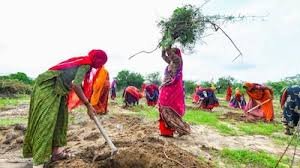Ancient chronicles, oral traditions, and Tibetan Buddhist texts challenge the narrative that Kukis are recent entrants to Manipur, highlighting their deep-rooted connection to the region’s hills.
By Hen Kuki
The recent memorandum submitted by the Coordinating Committee on Manipur Integrity (COCOMI) to Prime Minister Narendra Modi — contesting the claims made by the United People’s Front (UPF) and the Kuki National Organisation (KNO) during their November 6–7 meetings with the Ministry of Home Affairs in New Delhi — may project an air of authoritative certainty, but it unravels quickly when measured against historical fact.
COCOMI’s assertion that the Kuki–Zo people have no ancestral rights over the tribal hills is not supported by history and firmly belongs in the realm of fiction.
COCOMI’s insistence that the Kuki presence in Manipur is merely a fortuitous by-product of colonial engineering betrays a profound unfamiliarity with the region’s longue durée. Long before the British began their cartographic interventions, Kukis appear in the chronicles, memories, and cultural landscapes of Manipur. The Cheitharol Kumbaba, the venerable chronicle of the Meitei kings, mentions Kuki clans as early as the fifteenth century, while older oral traditions speak of their alliance with the first ruler of Kangla. Even distant Tibetan Buddhist texts composed centuries before the East India Company turned its gaze eastward refer to “Ko-ki” peoples inhabiting precisely these hill tracts. These are not the fleeting footprints of itinerant strangers but the enduring presence of a people whose lives, lineages, and landscapes have intertwined with Manipur for centuries.
COCOMI Submits Memo to PM, Challenges Kuki Claims on Hill Areas https://t.co/U1Ge1RM65G #Manipur #COCOMI #KNO #UPF #HillAreas #TerritorialIntegrity
— POWER CORRIDORS (@power_corridors) November 17, 2025
READ: After Derailing RJD in Bihar, Owaisi Headed for Assam
The memorandum’s attempt to reduce this ancient presence to a colonial invention also collapses before demographic reality. British administrators, in their obsessive enthusiasm for categorisation, identified both “Old Kukis” and “New Kukis”—a distinction that alone unravels the claim that the community emerged ex nihilo in the nineteenth century. The so-called Old Kukis—Aimol, Kom, Chiru and others—were acknowledged by the British as having inhabited these hills long before the imperial apparatus arrived. Scholars of the region have repeatedly emphasised that the narrative of sudden Kuki migration is a colonial oversimplification rather than a reflection of cultural or archaeological truth. Later movements—driven by inter-tribal conflicts, ecological pressures, or political shifts—were layered atop an already ancient habitation, not the beginning of it.
Equally flawed is the memorandum’s understanding of land and place. For hill societies such as the Kukis, land is not a commodity parcelled into tidy rectangles but a living cultural organism—an inheritance of ancestors, a theatre of identity, and a wellspring of sustenance. Their mode of cultivation, often dismissed by outsiders as primitive shifting agriculture, is in fact a sophisticated ecological rhythm refined over generations. It is a system in which land, forest, and community exist in cyclical harmony. To mistake this for rootlessness is to misunderstand the entire philosophy of the hills. The continuity of their villages, sacred groves, hunting grounds, and burial sites reveals a people deeply anchored to specific landscapes. No community cultivates the same hills, buries its dead in the same earth, and preserves the same ancestral sites for centuries unless it belongs to that land in the deepest cultural sense.
The critique of Kuki identity as a “colonial construct” similarly collapses under scrutiny. It is true that the British, in their classificatory zeal, popularised the term “Kuki” as a convenient umbrella for a constellation of clans and tribes. But such external labels have never created identity; at best, they are clumsy approximations of a far older cultural coherence. Long before the British coined their terms, the peoples today called Kuki were bound by shared languages, kinship structures, cosmologies, and social institutions. Their affinity with the Zo, Mizo, and Chin peoples across the hills of present-day Myanmar speaks to a civilisational continuity that neither colonial nomenclature nor modern politics can erase. The contemporary adoption of the term “Kuki-Zo” reflects a conscious cultural self-articulation, not an identity conjured in the filing rooms of colonial bureaucracy.
The memorandum’s most sweeping—and most untenable—claim is that the Kukis lack indigeneity because they were not recognised by pre-colonial states. Indigeneity is not a royal decree or a bureaucratic certificate; it is rooted in memory, belonging, continuity, and cultural endurance. A community that has lived upon the same hills for centuries, developed a worldview shaped by those forests and mountains, sung its epics, forged its alliances, fought its wars, mourned its dead, and honoured its ancestors on the same soil needs no external validation to affirm its connection to the land. The Kukis, with their intricate oral histories, chieftainship structures, clan genealogies, and shared myths of origin, wove themselves into the very fabric of Manipur’s hills long before modern borders or colonial maps existed. To deny this is to deny not only history but the cultural ecology of the region itself.
In sum, the COCOMI memorandum reads less like a sober engagement with the past and more like an attempt to impose a politically convenient narrative upon a richly complex history. Its assertions, however forcefully made, cannot withstand the weight of historical chronicles, oral literature, cultural anthropology, linguistic affinities, and the enduring memory of the hills. A truthful engagement with Manipur’s past demands an acknowledgement of its plural inheritances and shared histories. The Kukis are not latecomers attempting to appropriate land; they are one of the ancient hill peoples whose identity, memory, and culture have shaped the very ancestral geography now under dispute. Any narrative that excludes them from the story of Manipur is therefore not merely incomplete—it is profoundly inaccurate.
(The writer is a research scholar)













